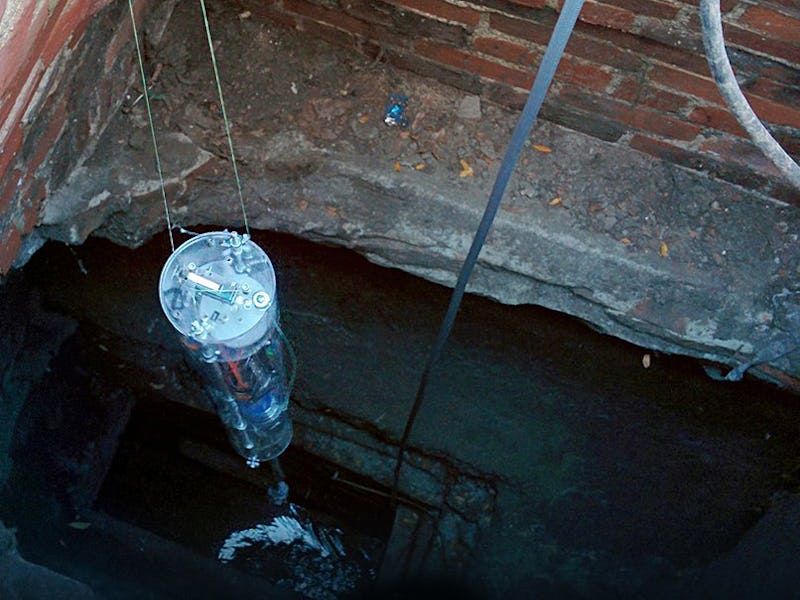Autonomous Super Mario-Themed Sewer Robots Live-Stream Neighborhood Microbiome Data
The answer to our health is in our excrement.

Take a look at your toilet and ponder for a moment. Each time you depress the lever and sink a number two, you flush extremely personal information about your microbiome down the toilet. The contents of one flush can reveal any communicable diseases you may have, the viruses and bacteria residing in your gut, what drugs you are taking, and even if you are obese or diabetic.
An entire area’s worth of sewage can indicate the general health of a population. But “sewage sampler” is not an envious job title, and it takes time to collect samples, bring those samples back to a lab, and then process them.
Researchers at MIT’s Senseable City Lab are working on a more efficient (and less nauseating) way to gather people’s poop data: autonomous robots. Naturally, the robot is named Luigi — after the second most famous plumber in the world — and it is a part of project Underworlds.
“We imagine a future in which sewage is mined for real-time information that can inform policy makers, health practitioners, designers, and researchers alike,” the Underworlds website says.
Not the shiny autonomous robots that futurologists dream about, but the autonomous robots that the real world will be able to use.
Today’s sewage sampling takes place primarily at waste water treatment plants, where the sewage is far from residents and there’s a lot of excess run off. This can cause problems in the data, principal investigator Carlo Ratti and project manager Newsha Ghaeli write in a joint email to Inverse, because pathogens in the sewage environment are different than pathogens in the human body.
“As such,” Ratti and Ghaeli write, “we’ve found that sampling upstream with Luigi gives us a much more representative signal of the human microbiome.”
Flushing away free data
Underworlds is a work in progress. Before Luigi, there was Mario. But Mario was clunky, the sewage-sucking syringes got clogged with poo and had to be manually cleaned, and the battery packs were liable to catch on fire, reports Spectrum IEEE. Luigi, on the other hand, can suck up liquid, process it, and then isolate the viruses and bacteria for lab analysis.
Eventually, the bot will be able to run autonomously and process samples on its own and live-stream data back to scientists.
“Probably the most obvious first application is contagious disease monitoring, and the prediction of outbreaks of infectious disease before symptoms arise,” Ratti and Ghaeli write. “Early warnings in relation to the presence of new flu strains in urban centers could significantly reduce a community’s medical costs, save lives and help prevent pandemics.”
Stress and obesity levels, as well as chemicals in the water and antibiotic resistance, could also be measured. People are literally flushing away free community health data, and the Underworlds project hopes to scoop that data up.
The future of our sewage
In the future, autonomous robots named Luigi could be collecting and analyzing the data in our sewage. Health officials will be able to detect trace amounts of pathogens in each neighborhood and see what areas need help. Live-stream sewer statistics will flow in like mid-game sports stats.
Thanks to autonomous robots, sewage can be our savior.